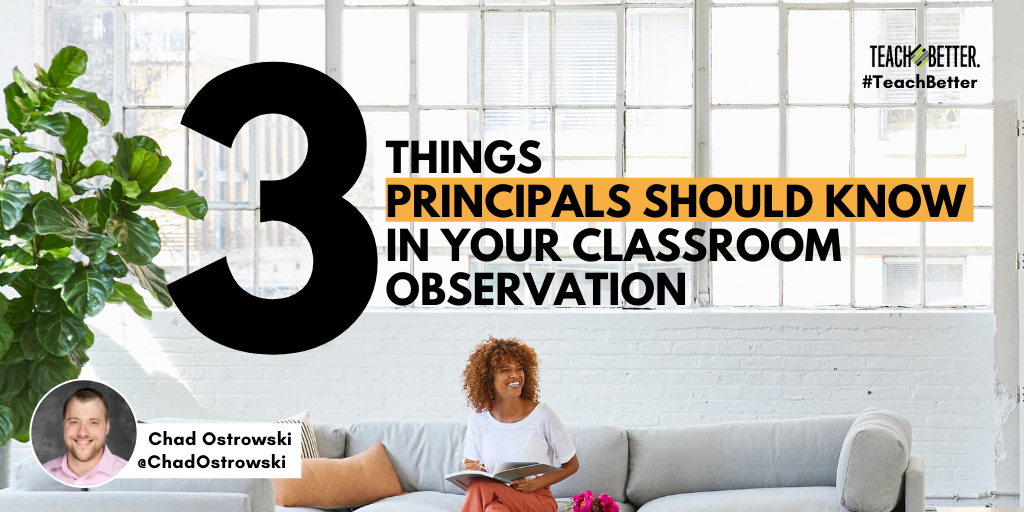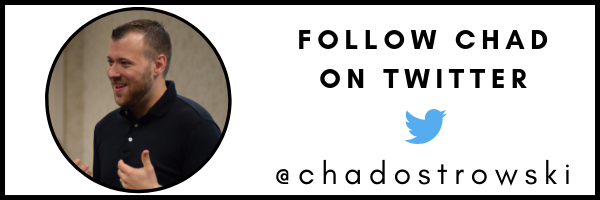In This Post:
- Tips to always be ready for a principal observation!
- The three important questions your principal (or anyone) wants answered in a classroom visit.
- The importance of regular procedures for your classroom and your students.
- Ways to help students be aware of their learning goals, assessment, and procedures.
That moment when…
It’s last period, you’re fighting off a cold, and you had a late night dealing with who knows what, so your lesson isn’t as polished as you would like it to be. All of a sudden you see your door creep open and your principal walks in for an observation.
As you look around your room you quickly assess the engagement of your students, the posted material, and the overall feel of your classroom to ensure that the next 5 – 10 minutes goes as smoothly as possible.
Just keep calm…and read on.
RELAX…it’s going to be okay. By the end of this post, you will be able to handle this scenario in your sleep! (Ok…well, don’t seriously sleep in your classroom…that would look really bad…but you know what I mean right?)
There are 3 things your principal needs to know as soon as he or she walks into your classroom. As a matter of fact, if you take a few moments before each day and you “train” your principal (and students) to know where this information is, then you will always be prepared.
In my classroom, I developed a comprehensive, mastery-based system that intentionally included all of these components. But in your classroom, you may have your own systems and routines to make sure your bases are covered.
Here are the 3 things that your administrator is going to want to know the first 5 seconds of any observation.
No matter who my principal tapped on the shoulder, they could confidently answer or quickly reference the information to provide a response. Click To Tweet1. In an observation, your principal wants to know: What are your students learning? And are they aware of it?
Posting learning targets or objectives on the board is a great habit to get into. I always had learning targets posted on the board in the front, back, and sides of the classroom for easy reference.
This, however, is not useful if students don’t interact with them. Before staring any lesson I always had my students write goals, discuss goals, and share them with the class. This first 5 minutes even saved a lot of lessons by increasing student focus and engagement.
Through these daily discussions, the targets became something the students interacted with every single day. This meant that no matter who my principal tapped on the shoulder, they could confidently answer or quickly reference the information to provide a response. Even “that one student”, the one that always made me nervous, could answer”What is your learning objective today?” or “What are you learning about right now?”
By posting the targets this also cues your principal into what’s going on in the room.
2. In an observation, your principal wants to know: What are your students supposed to be doing or working on?
As your administrator walks the room, is it clear to them as well as the students what everyone should be doing? And not just because you told them 5 seconds before, but because the directions are clearly stated on the activity, posted on the board, or being described some other way.
It is always a good practice to assume that nothing you say is heard fully by your students. If one of them was zoning out during instructions (they never do that right?) where would they look, how would they know what they are supposed to be working on?
If these questions can be easily answered by the learner, then they will also be easy for your principal to find and answer as well. This also reduces frustration, management issues, and other classroom disruptions, which is always a plus!
3. In an observation, your principal wants to know: Where are your students in mastery of the content? How will they know where they are?
This is probably the most difficult, but the most beneficial piece of information you can explicitly and regularly share with your students.
In my classroom, I always kept a progress tracking board. This served as a visual reference for exactly where every student was on their journey to master the standard or skill we were working on at any given time.
This also meant that my principal could take one look at the board and know where every single student in my class was in their learning. If you don’t have a tracking board, a clipboard, or a way for students to track their progress, you should consider getting one. These should exist so that both you and the learners know where they are and where they need to be at all times.
Your principal will appreciate and be impressed when you can articulate exactly how every learner is doing at a given moment. You should also make sure the way you are assessing your students’ knowledge is explicit and understood by anyone completing a learning task.
Got all these covered? You are probably good to go! If you are wondering what some of this looks like or how to implement it in your classroom I’d love to help you!
Interested in seeing how I help teachers answer all of these questions and much more? You can take a FREE COURSE (seriously no joke…totally free, see the link below) that I developed to help teachers like YOU.
[scroll down to keep reading]If you have your own way to prep for the “anytime visit” or random walkthrough that gets thrown your direction, I’d love to hear about it! Please reach out! You can also download our free walkthrough guide HERE.
About Chad Ostrowski
Chad Ostrowski is the co-founder of the Teach Better Team and the creator of The Grid Method, but he is a middle school science teacher at heart. He now travels the country sharing his story, working with teachers, schools, and districts to help them to reach more students.




